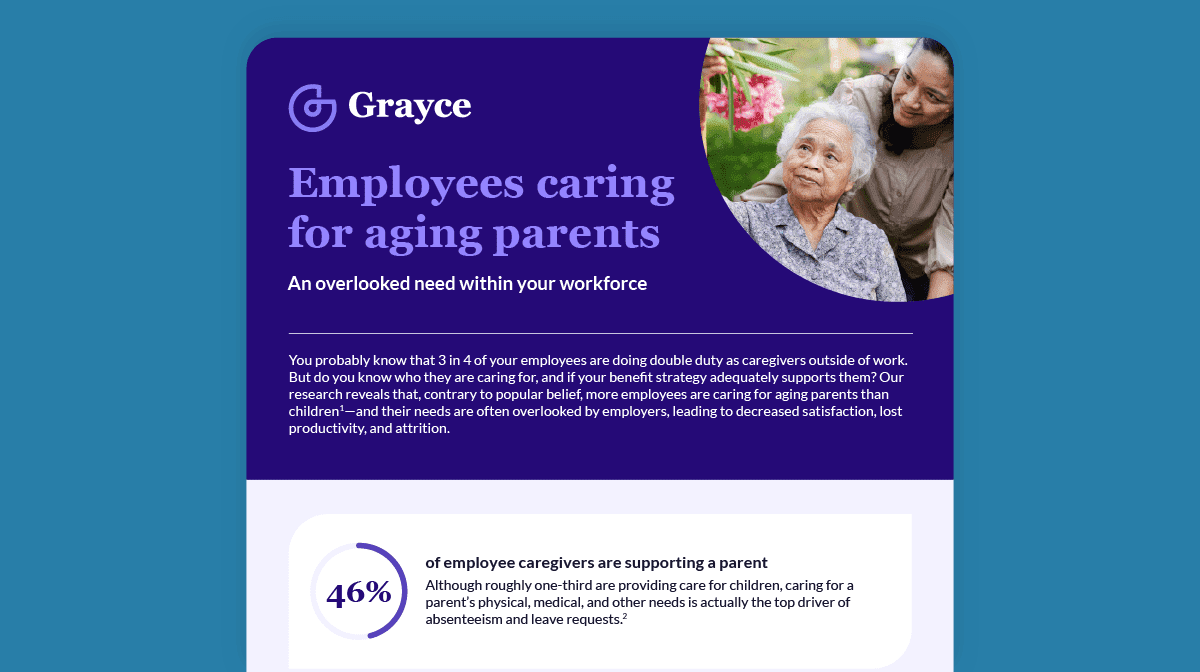The Cost of Caregiving
The financial impact of our care crisis
Learn about caregiving trends and how to better support an often overlooked segment of your workforce.

You probably know that 3 in 4 of your employees are doing double duty as caregivers outside of work. But do you know who they are caring for, and if your benefit strategy adequately supports them? Our research reveals that, contrary to popular belief, more employees are caring for aging parents than children—and their needs are often overlooked by employers, leading to decreased satisfaction, lost productivity, and attrition.
Although roughly one-third are providing care for children, caring for a parent’s physical, medical, and other needs is actually the top driver of absenteeism and leave requests.
Comprising nearly a third of the workforce, Gen Xers are more likely to care for their parents than millennials and baby boomers.
Nearly three-quarters say that getting support for their care needs would help them avoid or shorten time away from work.
More than three-quarters agree that companies are more understanding of childcare issues than adult caregiving responsibilities.
Employee caregivers without children report less satisfaction with company support than those with children—69% versus 89%, respectively.
Caring for a loved one is now the number one reason talent is leaving the workforce, behind early retirement. As a result, employers are losing $44 billion annually 7 due to caregiver absenteeism and attrition. With an estimated 70 million Americans forecasted to turn 65 by the year 2030, the time is now for employers to adopt comprehensive employee benefits strategies that support caregivers across life stages.
Download infographic

Sign up to receive the latest resources and updates from Grayce.